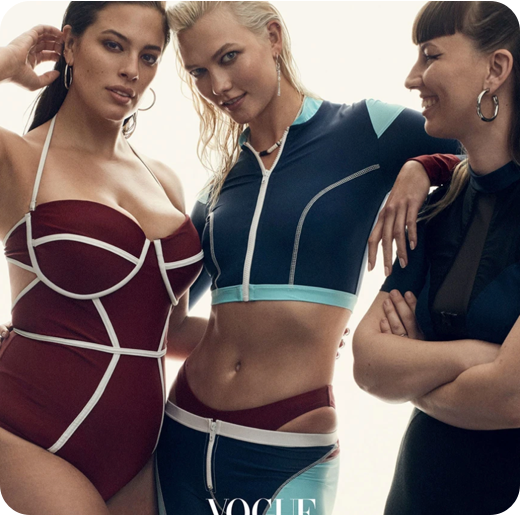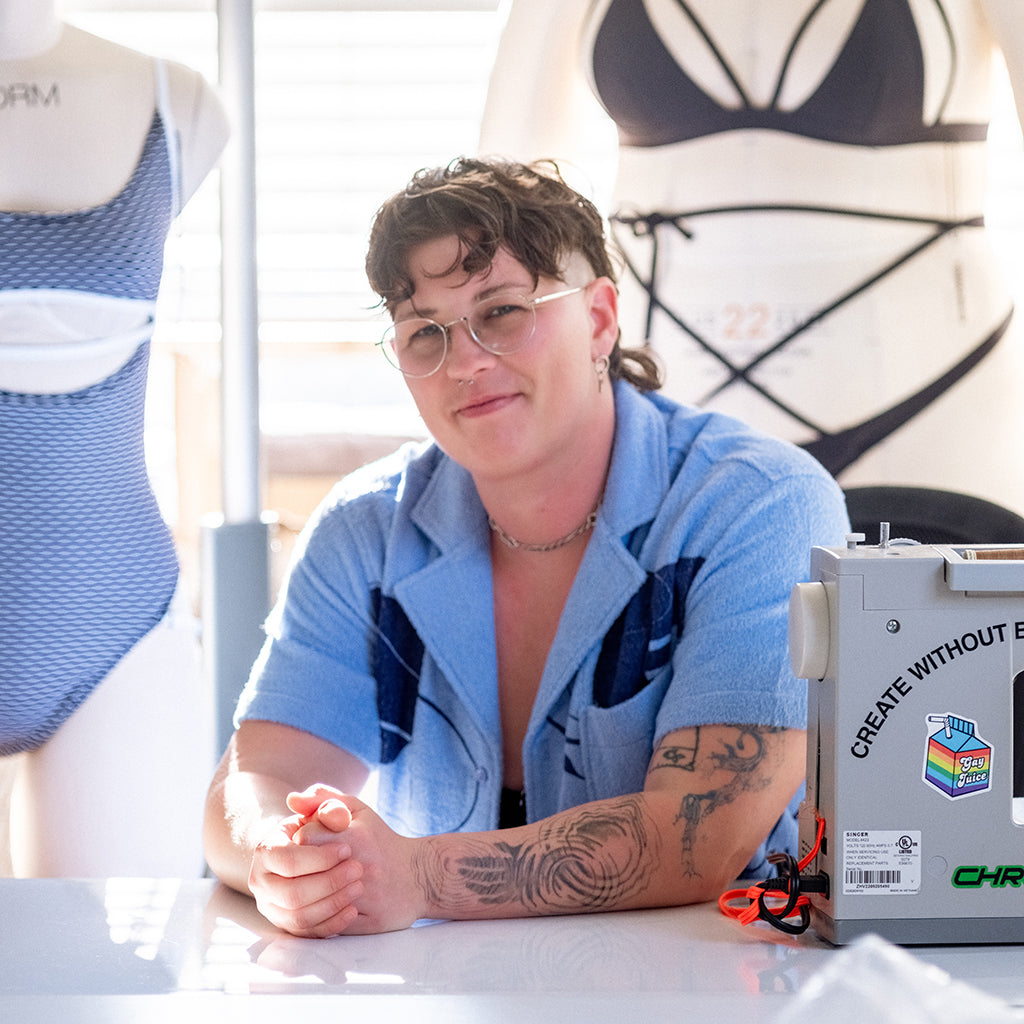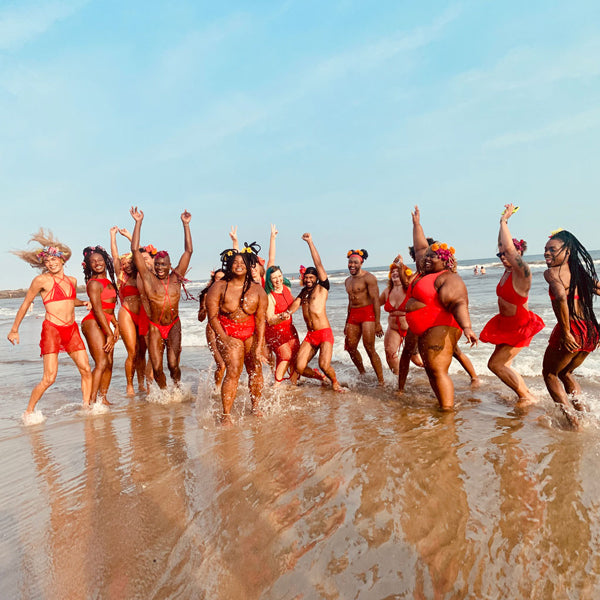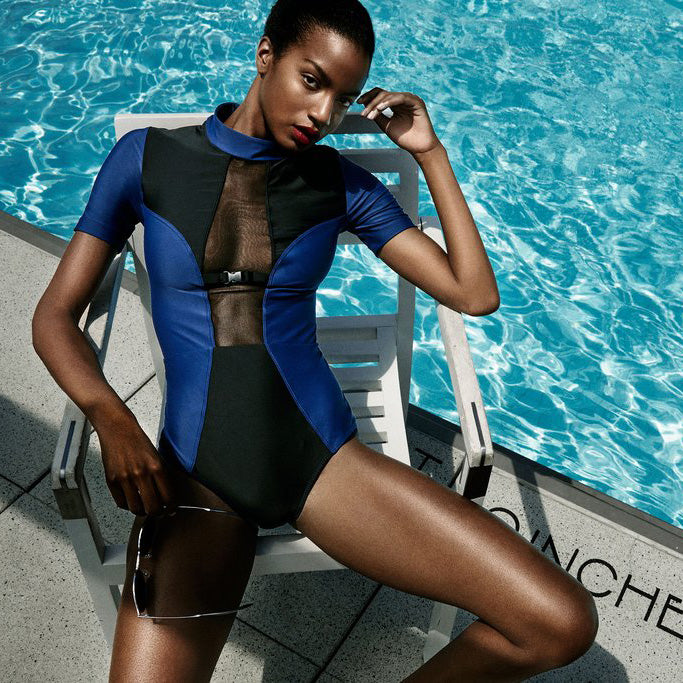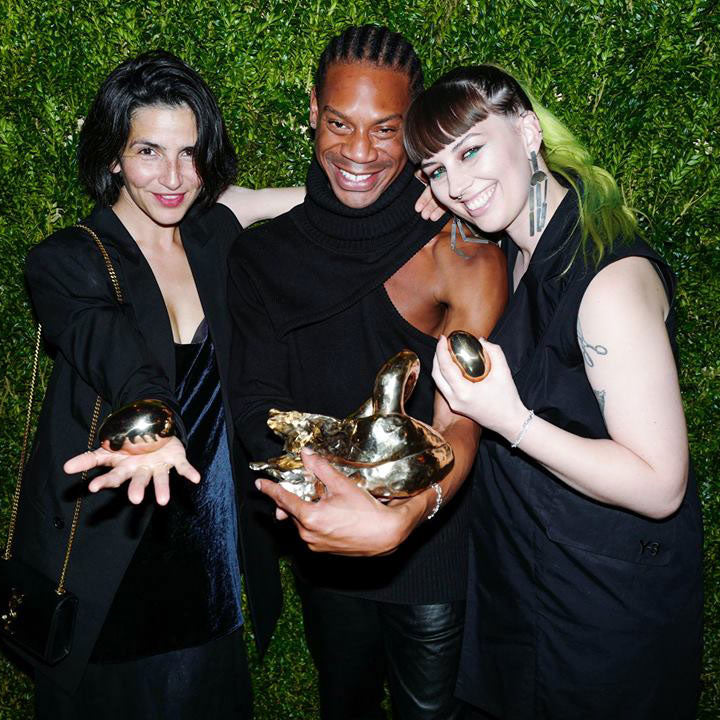Chromat Ted Talk
As fashion designers, we have a responsibility to utilize our platforms to explode the historically narrow view of who is considered beautiful.
Chromat founder Becca McCharen-Tran spoke at Ted Headquarters about how our work at Chromat celebrates all shapes and sizes on the runway and beyond.
Read on for the full transcript.
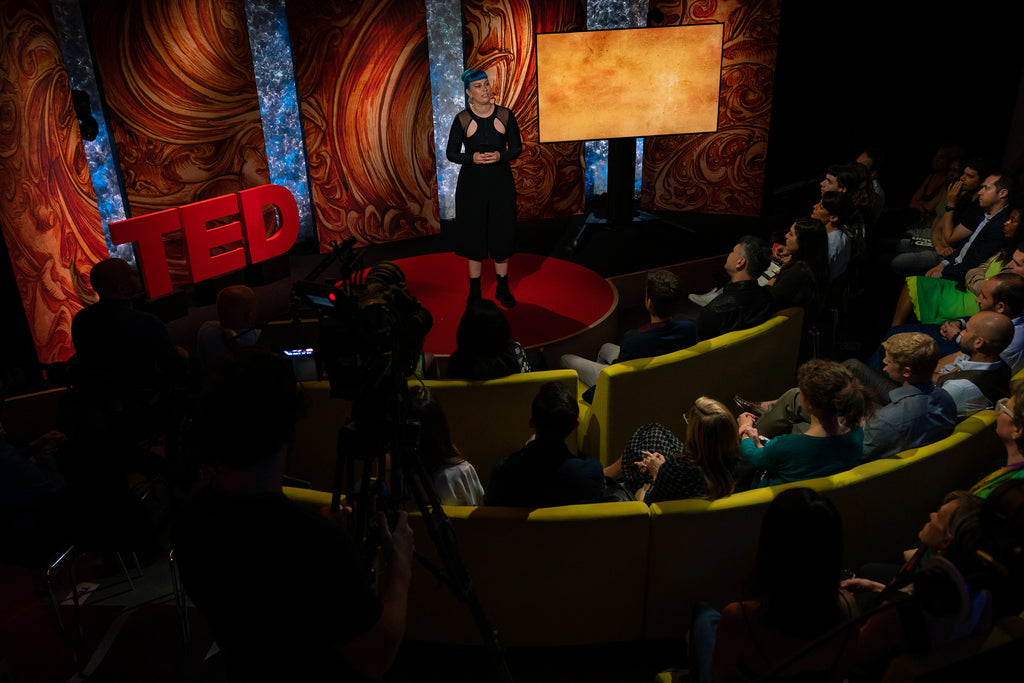
As fashion designers, our decisions have the power to change our culture. We choose who is cast in our runway shows and campaigns and ultimately who is celebrated and considered beautiful. Having this platform is a responsibility, one that can be wielded to exclude people or to empower others.
Growing Up
Growing up, I was obsessed with fashion. I poured over fashion magazines. To be fashionable was to be tall and skinny with long, shiny hair. That’s what I saw as the ideal and it was reinforced everywhere I looked. And it still is.
I wanted to be like the models, so I stopped eating. It was a dark time in my life- my eating disorder consumed me. All I could think about was counting calories and waking up early to run several miles before school every single day.
It took me years to fully release the grip that eating disorder had over my life- but when it did, it freed up so much brain space to think about what I was passionate about.
The Fashion Industry
For so long the fashion industry has worked hard to center a definition of beauty that celebrates thin, white, blonde, cis gender, able bodied, young models as the ideal.
It’s impossible not to be bombarded with models that have been photoshopped until there’s not a visible pore, fat roll, or stretch mark in sight. You don’t need to look far to find examples.
This narrow beauty ideal is damaging, dangerous and destructive. And we need to explode it immediately.

One of the worst things I’ve realized over the years is that my experience with disordered eating isn’t an anomaly, it’s par for the course: in fact, study shows that approximately 91% of women (and likely people of all gender identities) are unhappy with their bodies. It is unforgivable that we live in a society where it’s normal or expected for teenagers to grow up hating themselves.
We’ve been fighting against these restrictive beauty standards for decades now. And there has been headway: plus size models like Ashley Graham and musicians with body positive messages like Lizzo are breaking into the mainstream. Brands like Aerie have launched campaigns without photoshop retouching. But we are still inundated with unrealistic expectations. Like Lizzo said “Body positivity only exists because body negativity is the norm."
How do we change the stigma around being different, or not assimilating to the narrow beauty ideal? By celebrating beauty in all different forms, bold and unapologetically.
Many fashion designers themselves reinforce a restrictive idea of beauty, from the way they’re taught in school into the real world.
So much of the design process is entrenched in a historical body ideal. Different sizes bodies aren’t taken into account, they aren’t thought of during the design process. From only designing on size 4 mannequins, to sketching on bodies drawn extra long and not anatomically proportioned. Who are these designers, designing for?
And the conversation around exclusivity in fashion doesn’t begin and end with size. It’s about seeing people of all different gender expressions, different ages, different ability levels, all races and ethnicities recognized for their own unique beauty.
Chromat Runways
In my own work as a fashion designer, I started a line called Chromat and we are committed to empowering women, femmes and non-binary people of all shapes and sizes through perfectly fit garments for every body. Swimwear has been a huge focus for me, because of the power that this single garment can have over how people feel about themselves. I wanted to take my focus on celebrating all body types to a garment that’s fraught with insecurity.

On our runways you see curves, cellulite and scars worn proudly. We are a runway show, yes — but we are also a celebration.
I didn’t actually start designing 10 years ago with a mission to change the entire industry. The models we cast in our shows were so radical at the time- and unfortunately still is shocking to some- that it became a huge part of what we’re known for.
However, Inclusivity means nothing if it’s only surface level.
Behind the scenes, from the photographers to the casting director to the interns, it’s imperative to include diverse decision makers in the process. It’s always better to collaborate with different communities rather than trying to speak for them.
This is an important piece of the puzzle that many young designers may not think about in the beginning of their career. Hiring a plus size or transgender photographer or a woman of color as your casting director or a black makeup artist who intimately knows how to work with all skin colors is essential to create a more holistically inclusive output.
Pool Rules
As swimwear designers, we wanted to re-write the rules around having a ‘bikini body’, so we cast babeguards to enforce important guidelines for acceptance and inclusion.

Instead of ‘no diving and no running,’ we wrote rules like Celebrate Cellulite, Stretch Marks Welcome and Body Policing Prohibited, as demonstrated by Ericka Hart, Geena Rocero, Mama Cax, Emme and Denise Bidot: a team of Babe Guards who are all activists in their own right.

Plus Sizing
I’ve always felt it was important to show our garments on a range of bodies, however it wasn’t until recently that we were able to expand our size range in a major way. We first launched a curve collection 5 years ago, and it fell flat. Our major department stores weren’t interested. And most department stores continue to only stock up to size L. The extended sizes are completely separate or don’t exist at all.

In fact, once our sales team told us that when retail buyers come to preview the collection, they want to be sold a ‘dream’ that appeals to the buyer’s ideal ‘aspiration’. But I’ve realized that it’s so much more important to open up this ‘dream’ to more people.
I want the consumer to know that it’s not your body that needs to change, it’s the clothes.

There needs to be more size options in all retailers, with garments that celebrate the body at all sizes, instead of focusing on minimizing the silhouette.
In 2018, Nordstrom placed an order up to 3X, and that was the first time we had investment from a major retailer to expand our sizing. This was 8 years into our business!
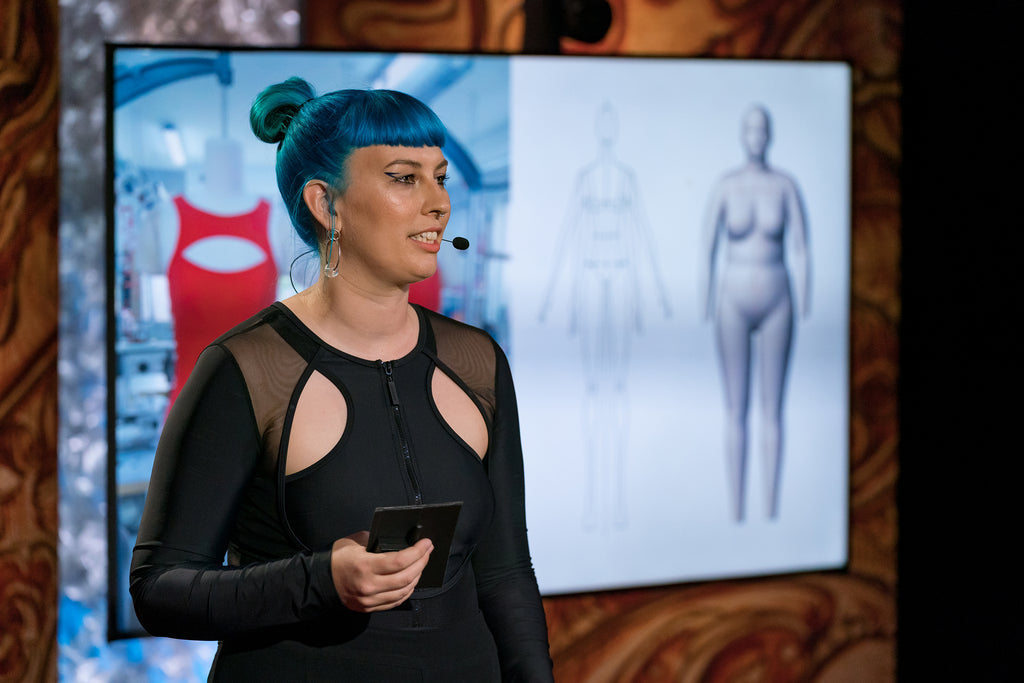
Since then, our design process has shifted dramatically- we now have different sized bodies to sketch and drape on in the studio. If more fashion schools taught these skills, more designers would have the ability to design for all bodies.
As fashion designers, we have a responsibility to utilize our platforms to explode the historically narrow view of who is considered beautiful.
My goal is that one day teens growing up don’t feel that same pressure that I did to conform. I hope that our work contributes to the fashion industry’s opening up to celebrate many different identities.
_________________


Thank you to the Ted team: Chee Pearlman, Amanda Miller, Briar Goldber, Zach Wood and fellow speakers Marcus Bullock, Amy Padnani, Sam Van Aken and Lee Thomas.

Vogue, 2019
kimberlymjenkins.com, 2019
Out, 2018


